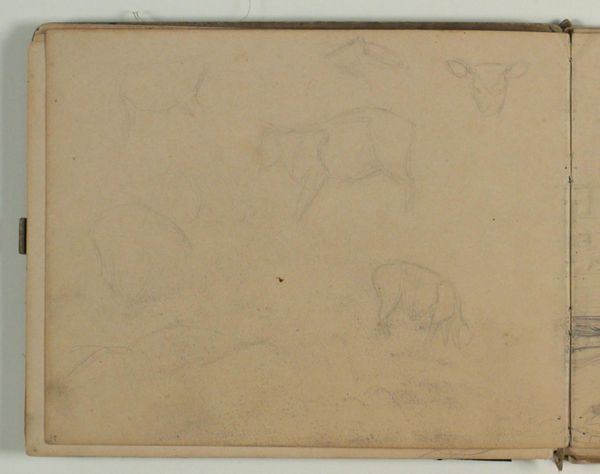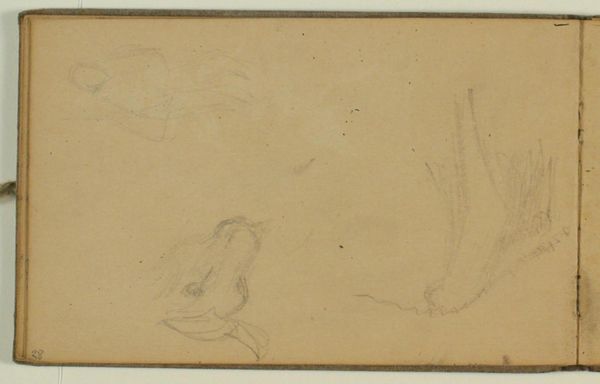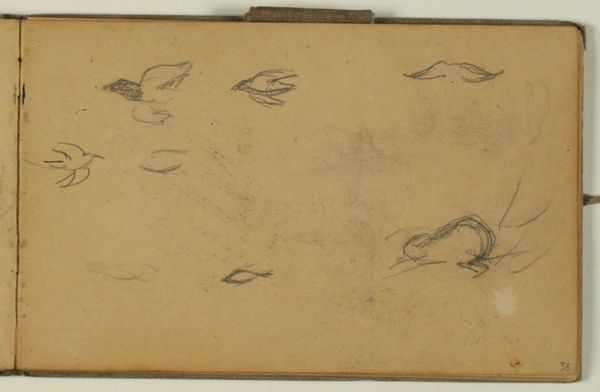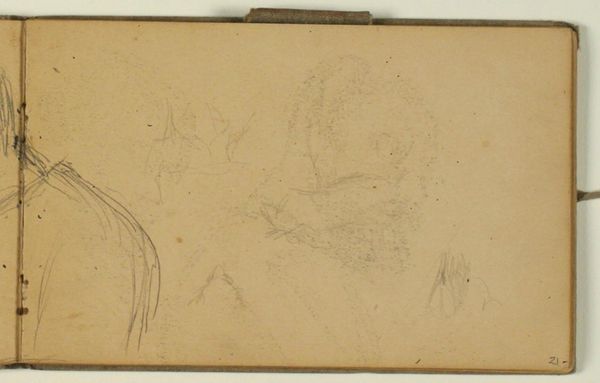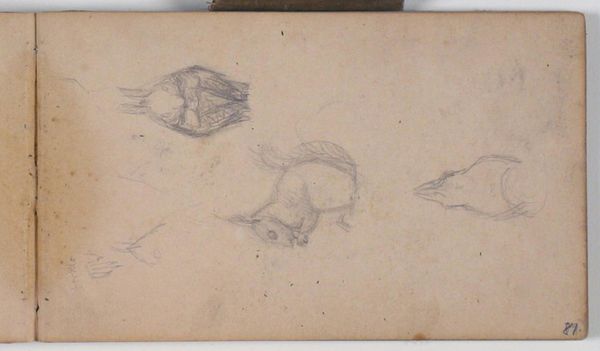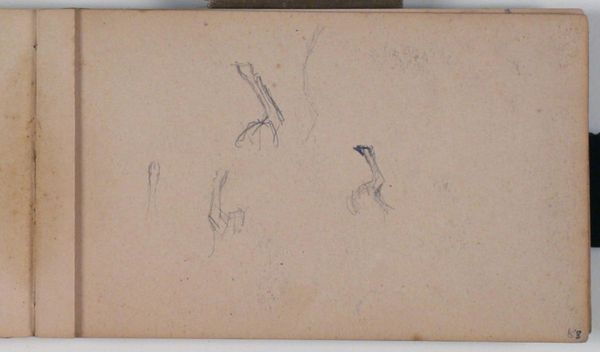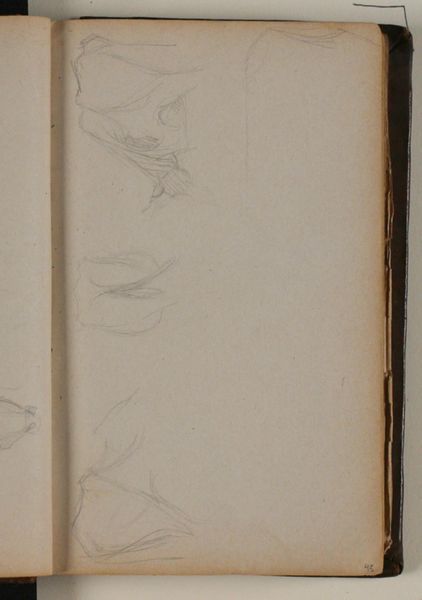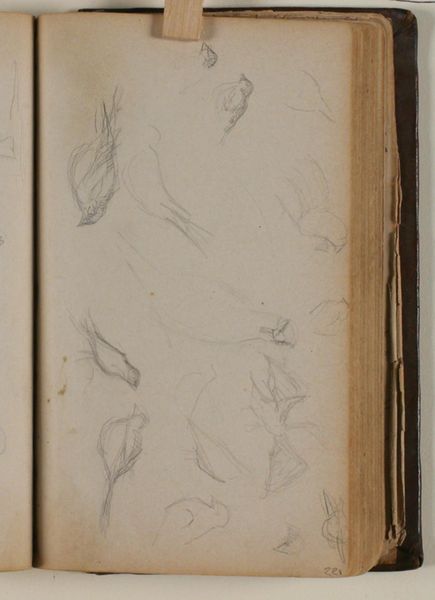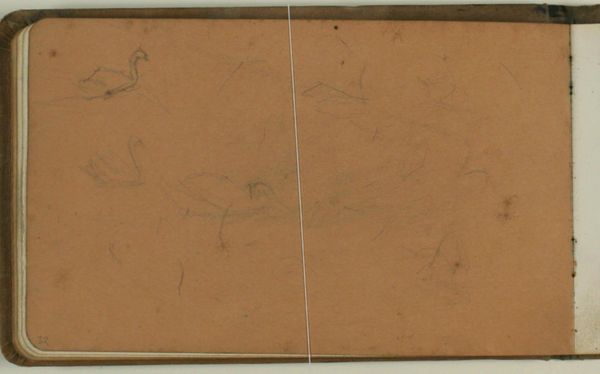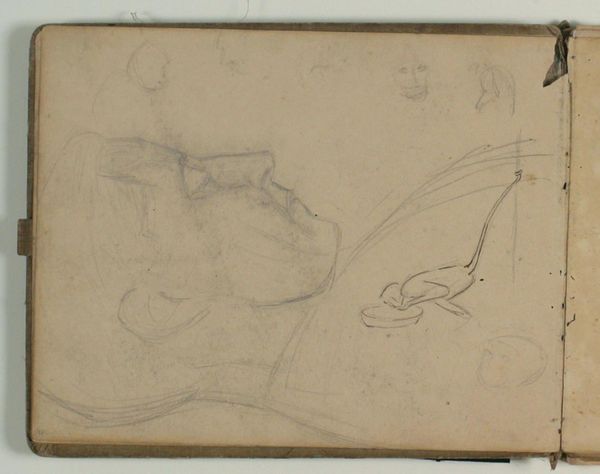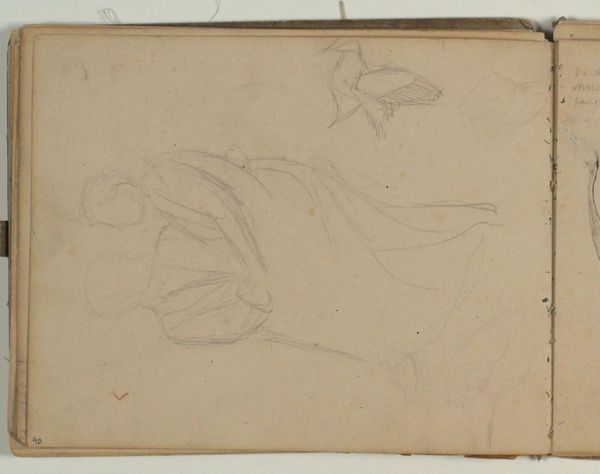
drawing, pencil
#
drawing
#
self-portrait
#
animal
#
landscape
#
figuration
#
coloured pencil
#
pencil
#
realism
Dimensions: 114 mm (height) x 183 mm (width) x 9 mm (depth) (monteringsmaal), 113 mm (height) x 182 mm (width) (bladmaal)
Curator: Before us, we have "Skitser af rådyr," or "Sketches of Deer," created by Niels Larsen Stevns between 1900 and 1904. It's currently housed here at the SMK, Statens Museum for Kunst. What are your initial impressions? Editor: Sparse. Austere. A humble study of form and posture in its purest skeletal representation. Curator: Precisely. The sketches reveal the essence of the deer, prioritizing basic forms over naturalistic representation. Note the use of pencil and perhaps coloured pencil as well, evident in some of the more subtle renderings. How do you think the choice of material and scale impacts the artwork’s presence? Editor: I'd say it emphasizes the intimacy between artist and subject, a private moment documented with immediacy, suggesting that it was an informal, almost casual study. Pencil, especially, facilitates portability and ease of execution, allowing Stevns to quickly capture the fleeting moments of the animal’s movements. Curator: Absolutely. It showcases not the finished product but the process of observation, highlighting the deer in its most basic essence through minimalistic composition, devoid of background or contextual elements. Editor: The lack of context makes me think of resource extraction from nature. The animal isolated on the page seems like a specimen or data point in service to another idea, like agriculture. I'm very conscious that the act of observing the animal also turns it into a kind of commodity, divorced from its role in the ecosystem. Curator: An astute observation. There is a tension between the artistic study and possible societal applications of such observational recordings. Regardless, "Sketches of Deer" invites us to look closely and think critically. Editor: Yes, revealing the economic underpinnings often concealed within idealized naturalistic imagery. A good lesson for the environmentally precarious world we inhabit.
Comments
No comments
Be the first to comment and join the conversation on the ultimate creative platform.
